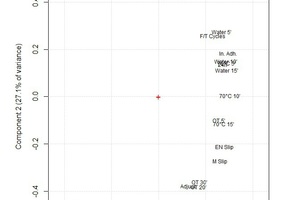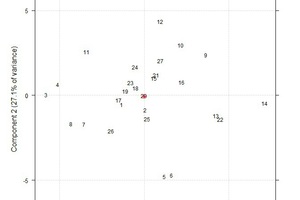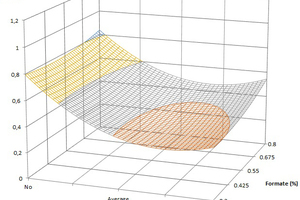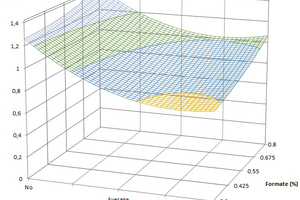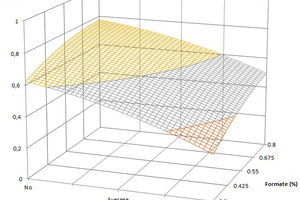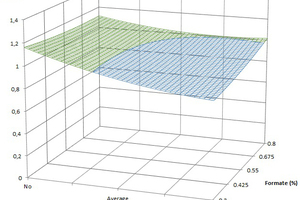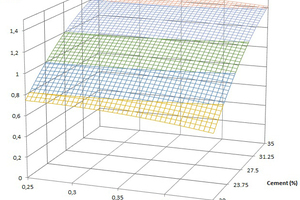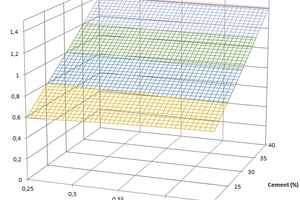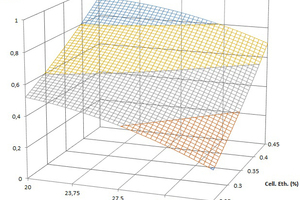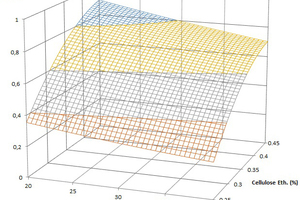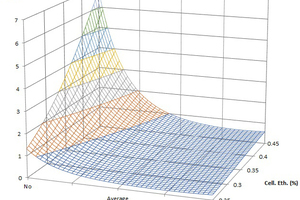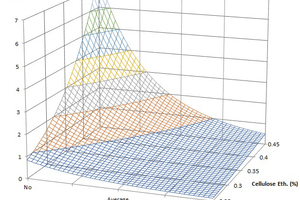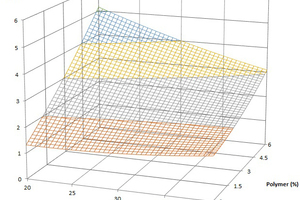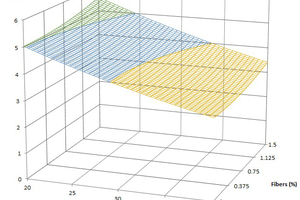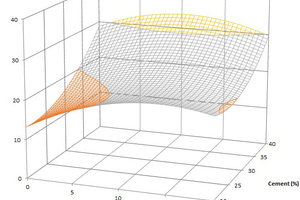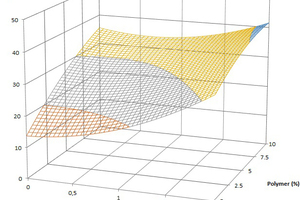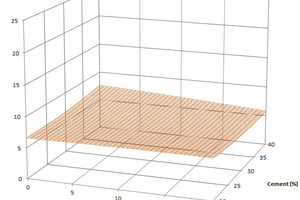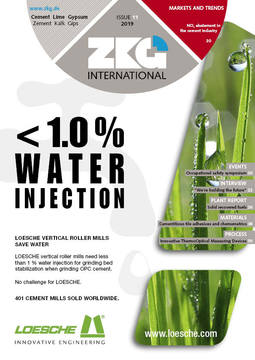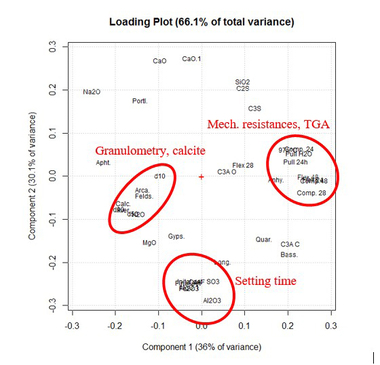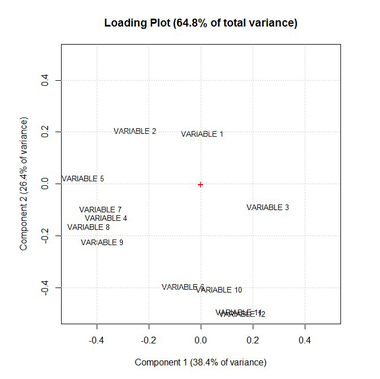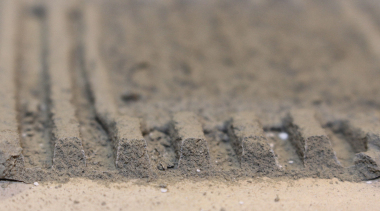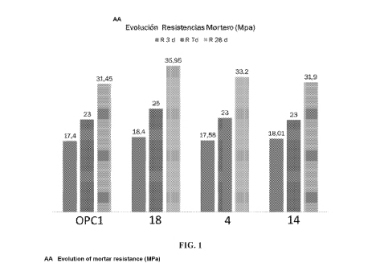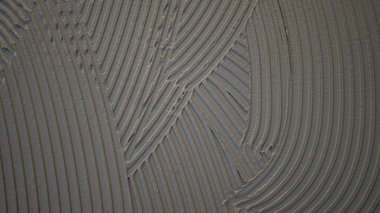Cementitious tile adhesives
and chemometrics: case studies
Chemometrics is the chemical discipline that uses mathematical and statistical methods to optimize experimental designs by maximizing the quality of the information obtained. It has demonstrated its flexibility and adaptability to formulation science and has been applied in a previous work to the formulation of cementitious tile adhesives. This paper will analyze the attempt to produce several experimental designs and the models dedicated to the understanding of the mechanisms that regulate the behaviour of different aspects of this family of dry-mix mortars, such as mechanical performance, deformability and dust generation.
1 Introduction
Cementitious tile adhesives are dry-mix building materials. Their formulations are usually evaluated in accordance with standards [1] that provide a considerable range of tests covering different aspects of these mortars, such as adhesion strength, flexibility and workability. This situation reflects the intrinsically multivariant nature of the testing of these materials. A previous work [2] has demonstrated the effectiveness of chemometrics for devising strategies for formulating adhesive mortars. In particular, the Principal Components Analysis [3] approach can be used to...

